Jump to:
What do hair extensions cost? Is there a difference between salon-grade and at-home extensions? Are they worth the price? We’ll answer each of these questions and more in our complete guide below.
How Much Do Hair Extensions Cost?
On average, hair extensions cost between $100 and $1,000. Expect to pay $100 to $500 to do it yourself, and $200 to $1,000 (or more) if you visit a salon. Prices also vary by salon and stylist.
- Clip-ins: $100 – $500
- Tape-ins: $200 – $1,000
- Microlinks: $200 – $900
- Sew-ins: $275 – $500
- I-tips: $300 – $900
The type of hair extensions you get affects the overall price you’ll pay. These are:
- Clip-ins are the most affordable
- Tape-ins and cold fusion types are the most expensive
- Using human vs synthetic hair greatly affects the cost
In this guide, we’ll look at what factors the cost of getting hair extensions. From the type of hair used, type of extensions, and maintenance appointments, you’ll be able to compare the prices and see which type of extension makes the most sense for you.
Human Hair Extensions vs. Synthetic Hair Extensions
The first thing that will affect how much hair extensions cost is whether human hair or synthetic hair is used. Human hair is more expensive than synthetic hair, but it looks more natural and can be styled with heat, colored, and cut.
Human Hair Extensions

Sixsmith/Shutterstock
Human hair is donated by a human donor and can be styled with heat and cut. The highest quality human hair is called “virgin hair” – it’s never been dyed, bleached, or permed.
Virgin hair costs more than human hair that has been chemically processed. You may also see “remy hair” extensions advertised, which are unique because the entire cuticle is intact for the hair bundle.
All the hair is collected running in the same direction, which results in fewer tangles. Human hair extensions direct from the supplier cost $75 to $400. This doesn’t include the cost to have them professionally applied.
Synthetic Hair Extensions

Courtyardpix/Shutterstock
Synthetic hair is cheaper because there is no human hair in it. It’s made out of a blend of different fibers and plastics. It’s designed to look like human hair, but the look is not quite perfect.
Hair extensions made with synthetic hair have a risk of looking “fake.” You can’t color synthetic hair, because the chemicals in hair color destroy synthetic hair.
You can’t use heat to style synthetic hair (flat iron, curling iron or wand, blow dry, etc.) because heat will melt or damage the synthetic fibers. Even too much direct sunlight can damage synthetic extensions.
Synthetic hair extensions cost anywhere from $50 to $85. They’re much more affordable than human hair, but won’t look as natural and have less versatility for styling.
Types of Hair Extensions
There are several different types of hair extensions, and each one has its pros and cons. From clip-ins to sew-ins, here are the types of hair extensions you’ll be able to choose from. After this, we’ll look at the cost of each different type so you can compare.
Clip-In Hair Extensions
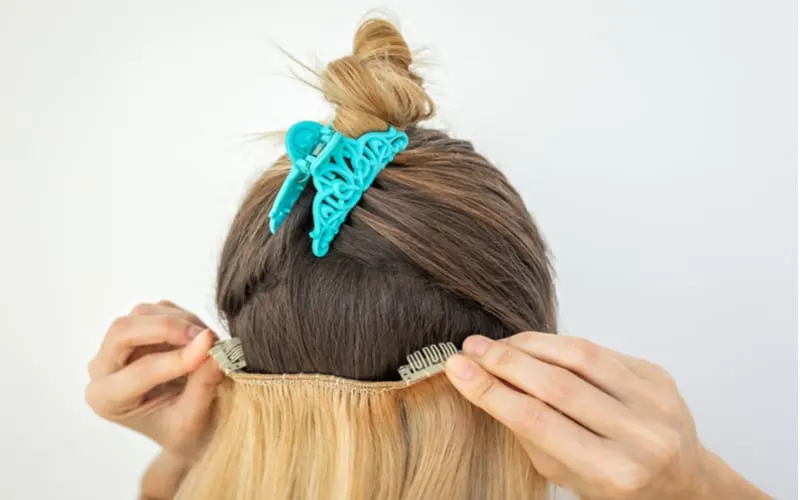
Shevdinov1/Shutterstock
Clip-in hair extensions are small sections of hair that have tiny clips attached. The clips are secured to and covered by your natural hair. Clip-in extensions are considered temporary. They can easily be installed and removed at home, no professional needed.
Most people choose to remove them before going to bed to keep them in good condition. If you sleep in clip-in extensions, they can tangle and mat.
Clip-ins are used to boost length and add density and volume in concentrated areas of the head. You can use clip-ins to boost hair volume around the face or create an overall longer look.
Installing clip-ins is easy; just lift a section of your hair out of the way, snap the clip closed at the root of your natural hair, then let your hair cover the clipped section.
Sew-In Hair Extensions
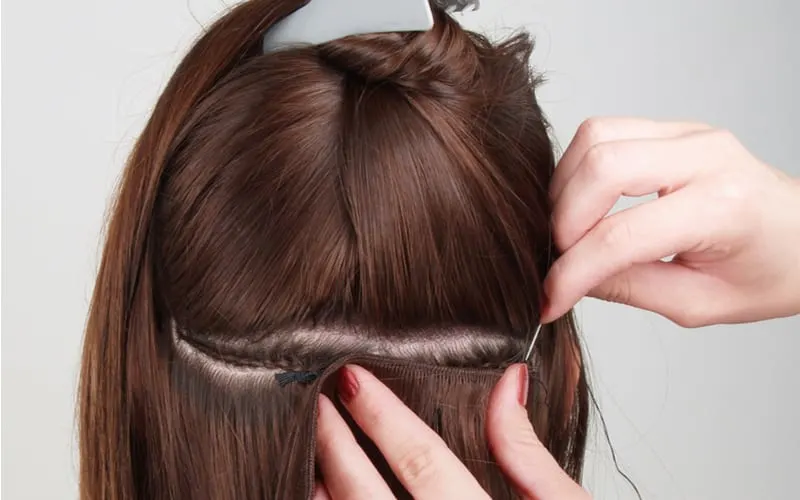
Sagir/Shutterstock
Sew-in hair extensions might sound a little scary, but they’re one of the most popular and long-lasting types of extensions. Sew-ins can be braided into your natural hair. Or, they can be added using small beads that attach to the hair.
They last about 6 to 8 weeks and should be installed and removed by a professional. Braid down sew-ins involve braiding the natural hair tight to the scalp.
Some of the hair is left out of the braids to cover the sewn-in wefts of hair once installation is complete. Small braids keep the extension wefts (strands of hair sewn to a very thin piece of cloth) laying flat.
This helps them seamlessly blend with the natural hair. Once the hair is braided, the weft section is woven into the braid for a secure and strong installation.
Braidless sew-ins (also called flat tracks or skip tracks) involve applying tiny beads, usually coated with silicone to prevent slippage, to the natural hair and using those to attach the sew-in wefts.
This method is ideal for someone with very thin or fine hair where the braids won’t be strong enough to securely sew the weave in.
Tape-In Hair Extensions

Sixsmith/Shutterstock
Tape-in hair extensions use adhesive to hold the hair extensions in place on the natural hair. Double-sided keratin tape (about 2 inches wide) has small sections of hair attached.
These sections are applied to the root of the natural hair on either side. The natural hair is “sandwiched” between two sections of the adhesive strips.
Each section is slightly overlapped to create a seamless look over the entire head. Tape-ins are known for laying flatter than some other extension types.
But they can also damage the hair in the long run due to the adhesive. They last for about 6 to 8 weeks and should be applied and removed by a professional.
While you have tape-ins, you can’t use regular shampoo, conditioner, or oily hair products. Any of these can cause the adhesive to slip down the hair shaft. Special shampoos are used while tape-ins are installed.
Microlink Hair Extensions
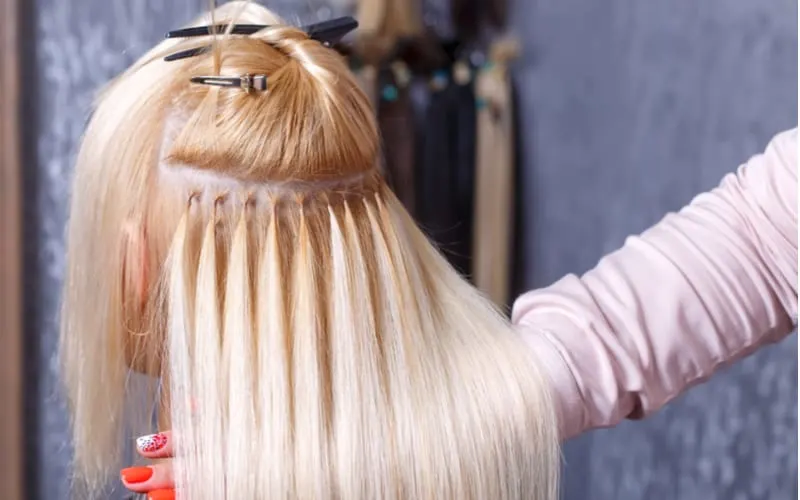
Aliaksandr Barouski/Shutterstock
Microlink hair extensions are wefts of hair that are applied with the use of micro silicone beads. After blowing your natural hair out, beads are attached to the natural hair one small section at a time.
Every bead has a small weft, or section of human or synthetic hair, attached to it. A special loop tool is used to pull a small amount of hair through and slide the bead onto it.
A plier tool is then used to squeeze and secure the bead onto each hair section. The result is a small extended section of hair that hangs from every section where a bead is applied.
Microlink hair extensions can last 6-8 weeks, but should be applied and removed by a professional to avoid damaging and pulling the natural hair. The beads may need to be tightened or slid closer to the roots every 3-4 weeks.
I-Tip Hair Extensions

Sixsmith/Shutterstock
I-tip hair extensions are small sections of hair strands that are installed just like microlinks. A micro silicone bead is attached to small sections of the natural hair using a looping device.
The bead slides into the hair; then, a plier tool is used to securely close the bead around the hair. Silicone inside the bead prevents it from sliding down the hair shaft.
The finished look with I-tip extensions is natural and almost undetectable. No adhesive or heat is used for application, so they will not damage the hair like other types of extensions.
They last for 14-16 weeks, longer than many other types of extensions. A professional will need to install and remove them for you.
It’s helpful to go in to have the extensions moved closer to your roots every few weeks. As your hair grows out, the attached beads will be further down the strand.
Hair Extensions Cost by Type
So, how much do the different types of hair extensions cost? The price varies by type, so we’ll list the average cost for each one in order from least to most expensive.
- Clip-ins cost about $100 to $500. They can be reapplied over and over and last for about one year, making them the most affordable type of hair extensions. They are best for medium and thick hair, which better supports the clips. You can apply these yourself.
- Tape-ins start at about $200 but can be as much as $1,000. They last for 6-8 weeks, but the adhesive used can leave a sticky coating on the hair when removed. They are best for medium and thick hair. You’ll need to have a professional apply these for a seamless look.
- Microlinks start at about $200 but can be as much as $900. They last for 2-6 months. They are best for thin or fine hair, but can be used for medium and thick hair. They should be applied by a professional and adjusted every few weeks to keep the micro beads close to the scalp.
- Sew-ins start at about $275 and go up in price as you add more to the hair (about $60/weft). They last anywhere from 2-6 weeks. A professional should apply these for you.
- I-tips can cost $300 to $900, depending on the amount of hair and the number of bundles used in the application. Since they last 14-16 weeks, they can be one of the more affordable types of extensions.
Hair Extension Maintenance Cost
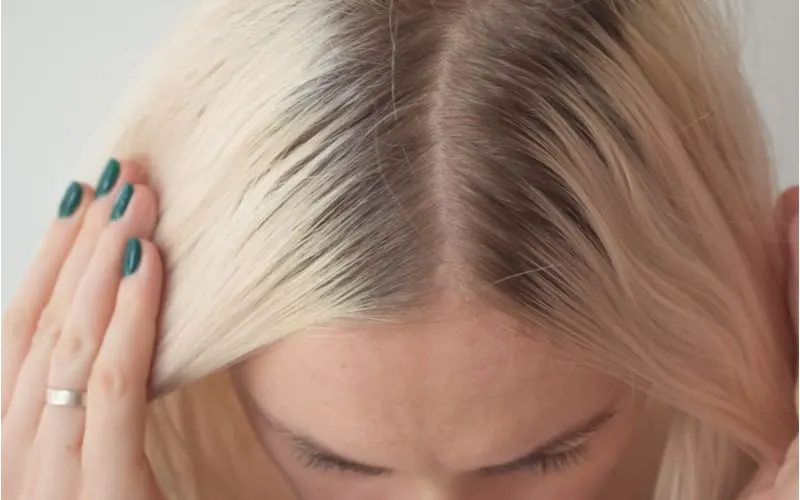
Vovk Natalia/Shutterstock
Clip-ins and sew-ins won’t require any maintenance while you’re wearing them, but some types of hair extensions do. Tape-ins, microlinks, and I-tips all require some level of maintenance to keep them looking their best.
Here’s what you can expect to pay at a salon for your hair extension maintenance.
Tape-In Maintenance
Expect to pay $150 to $350 for a “move-up” appointment. This is where the stylist will remove the taped sections of hair and reapply them closer to your roots as your natural hair grows out.
Make sure the salon you visit will shampoo and clean your hair before reinstalling the extensions. Regular shampoo and conditioner can’t be used on the hair while tape-ins are in place.
So your roots will be in serious need of a good cleaning by the time you go in for a move-up appointment.
Microlink and I-Tip Maintenance
Any type of extension that uses a bead to attach the extension to the natural hair will require some maintenance every few weeks. Expect to pay anywhere from $100 to $300 for these appointments.
The stylist will use a plier tool to open or loosen the micro beads, then slide them closer to the root of your hair. Having this done every few weeks will ensure your extensions look natural and start at the root.
As your natural hair grows, extensions applied with a bead will be further and further down the hair shaft. These maintenance appointments stop that from happening.
Hair Extensions Cost Summary
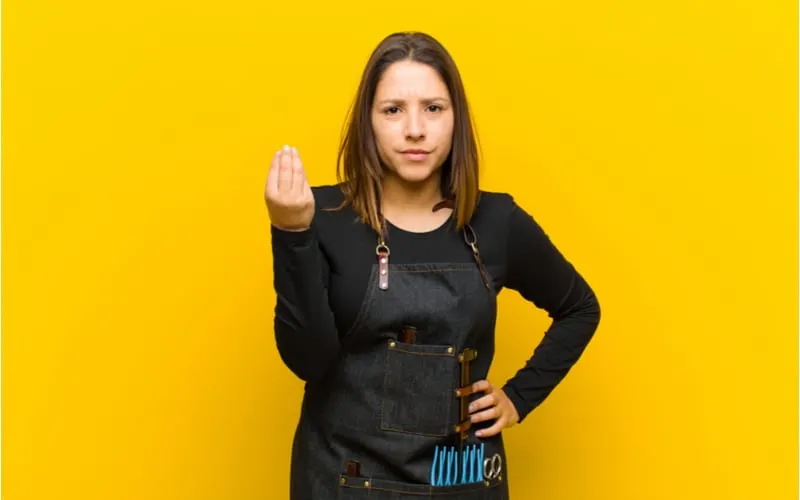
Kues/Shutterstock
Human hair extensions cost more than synthetic, but they are much more versatile. You can color and heat-style human hair, but not synthetic. Human hair extensions start around $75 and go up to $400.
Synthetic extensions cost anywhere from $50 to $85. Overall, hair extensions may cost you as little as $100 (clip-ins) and as much as $1,000 (tape-ins).
Tape-ins may be as little as $200, depending on the number of sections needed. Microlinks run $200 up to $900, sew-ins start at about $275, and I-tips are about $300 to $900.
For the longest-lasting extensions that won’t damage your hair, I-tips are the best choice. For extensions you can apply yourself and remove anytime, opt for clip-ins.
If you’re worried about damaging your hair, steer clear of tape-in and sew-in extensions. Tape-ins can leave a sticky residue on your hair after removal.
Braided sew-ins can cause hair breakage at the root and slow hair growth if left in too long. Don’t forget to factor in the cost of maintenance when you’re comparing the costs of different hair extension types.
Tape-ins, microlinks, and I-tips will all require one or more maintenance appointments while you’re wearing them. Tape-in maintenance appointments cost between $150 and $350. Microlink and I-tip maintenance appointments range from $100 to $300.
So, are you read to jump in and get a gorgeous new mane? We’re here to help! Click the link below to find and connect with a hair stylist near you.

